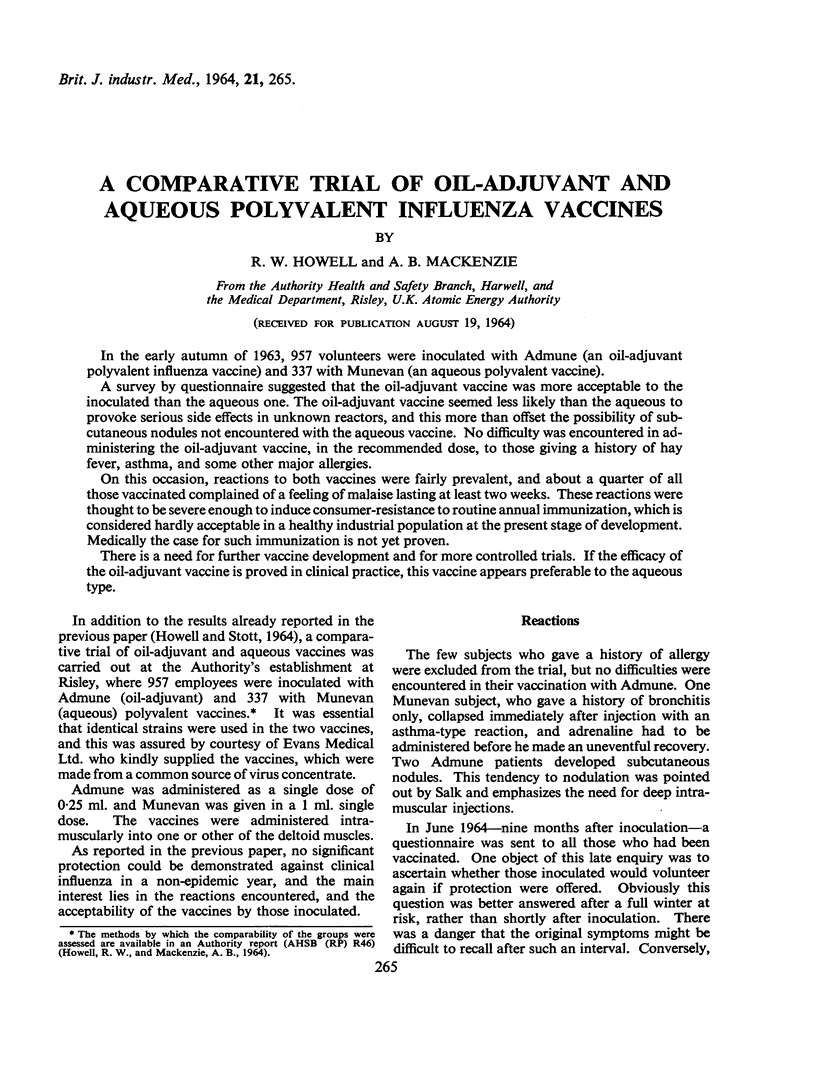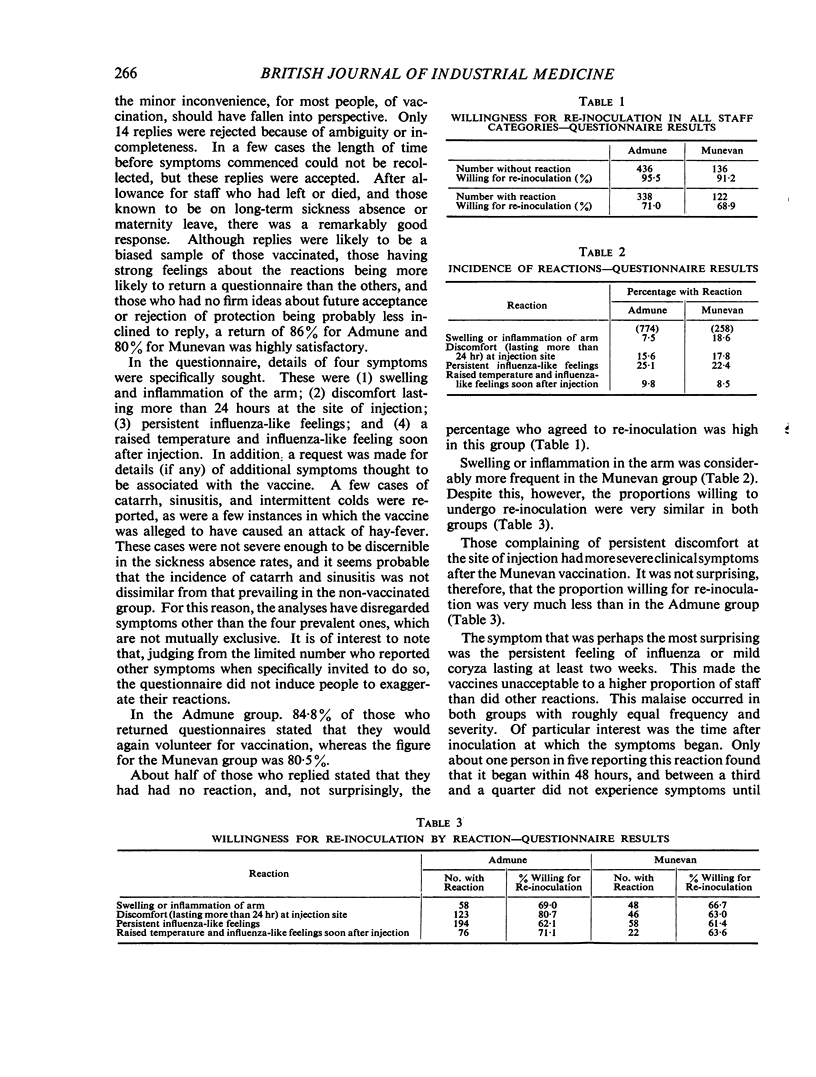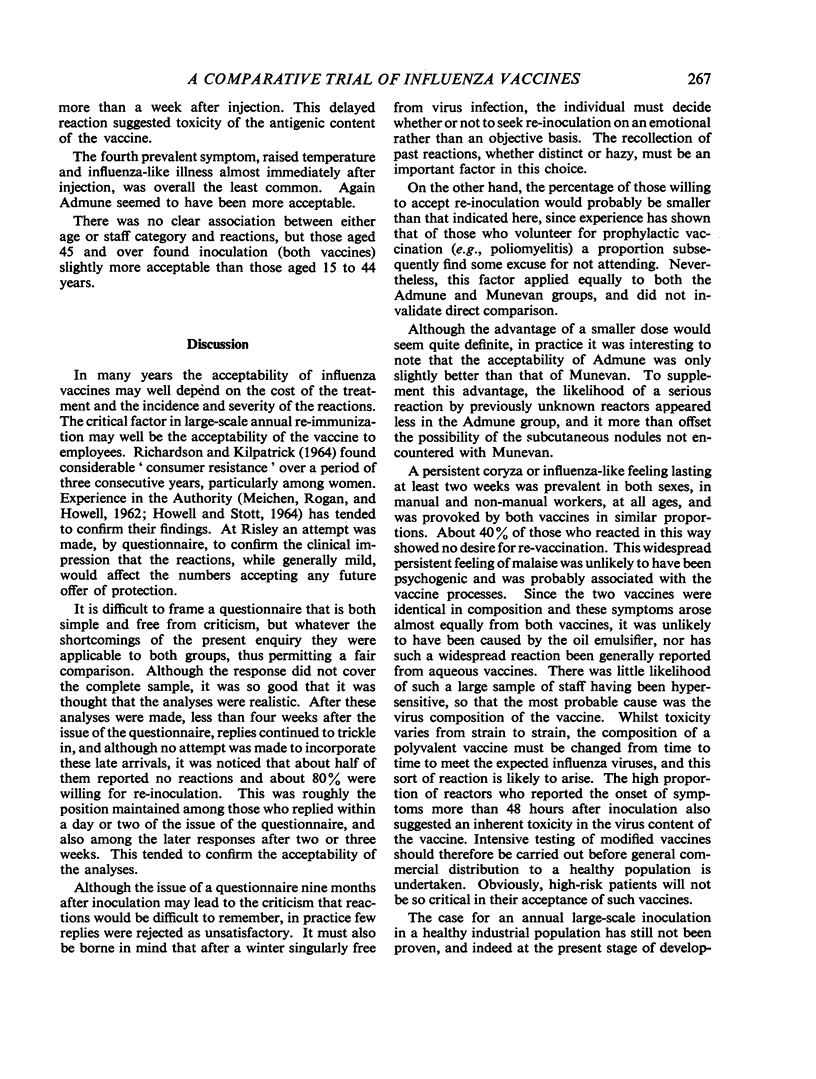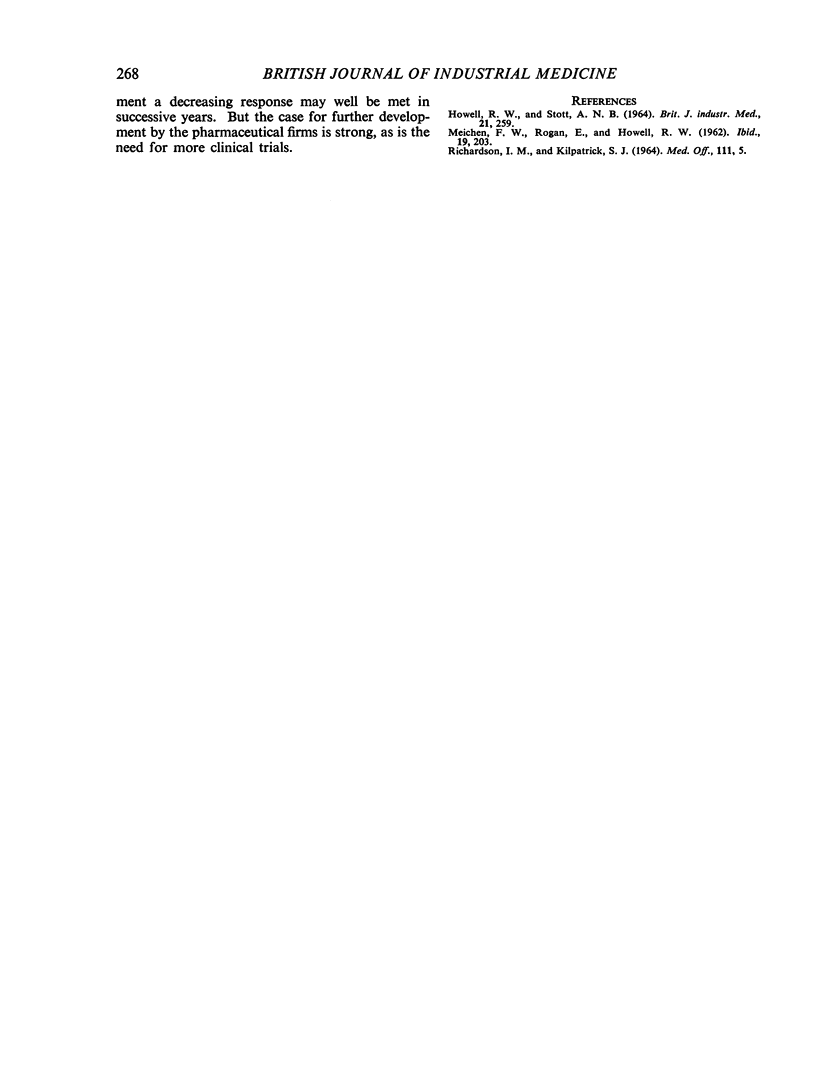Abstract
In the early autumn of 1963, 957 volunteers were inoculated with Admune (an oil-adjuvant polyvalent influenza vaccine) and 337 with Munevan (an aqueous polyvalent vaccine).
A survey by questionnaire suggested that the oil-adjuvant vaccine was more acceptable to the inoculated than the aqueous one. The oil-adjuvant vaccine seemed less likely than the aqueous to provoke serious side effects in unknown reactors, and this more than offset the possibility of subcutaneous nodules not encountered with the aqueous vaccine. No difficulty was encountered in administering the oil-adjuvant vaccine, in the recommended dose, to those giving a history of hay fever, asthma, and some other major allergies.
On this occasion, reactions to both vaccines were fairly prevalent, and about a quarter of all those vaccinated complained of a feeling of malaise lasting at least two weeks. These reactions were thought to be severe enough to induce consumer-resistance to routine annual immunization, which is considered hardly acceptable in a healthy industrial population at the present stage of development. Medically the case for such immunization is not yet proven.
There is a need for further vaccine development and for more controlled trials. If the efficacy of the oil-adjuvant vaccine is proved in clinical practice, this vaccine appears preferable to the aqueous type.
Full text
PDF



Selected References
These references are in PubMed. This may not be the complete list of references from this article.
- MEICHEN F. W., ROGAN E., HOWELL R. W. A study of the effectiveness of influenza vaccination in an industrial population. Br J Ind Med. 1962 Jul;19:203–210. doi: 10.1136/oem.19.3.203. [DOI] [PMC free article] [PubMed] [Google Scholar]


